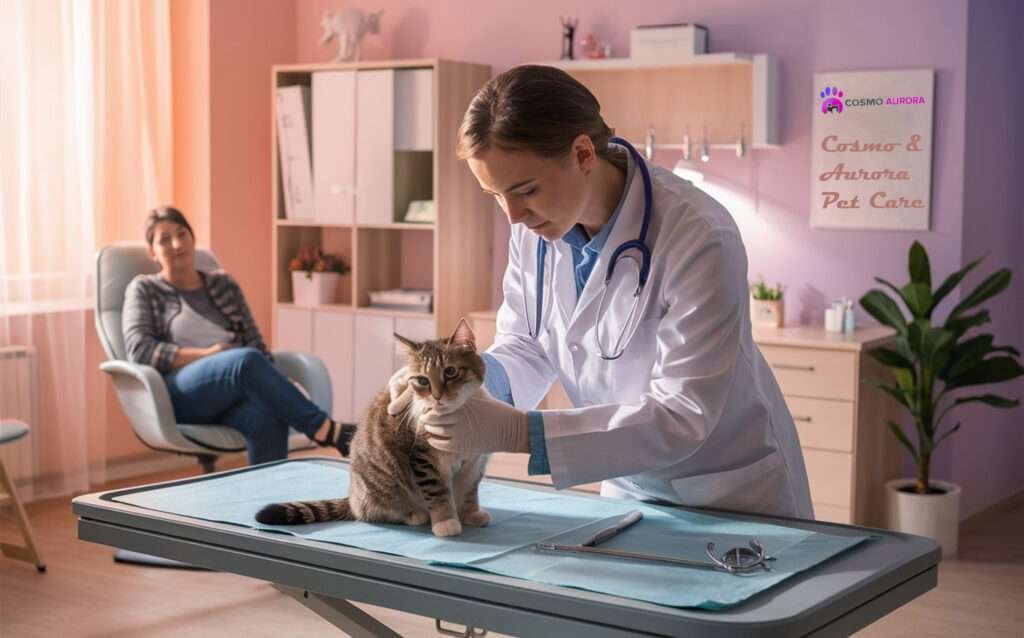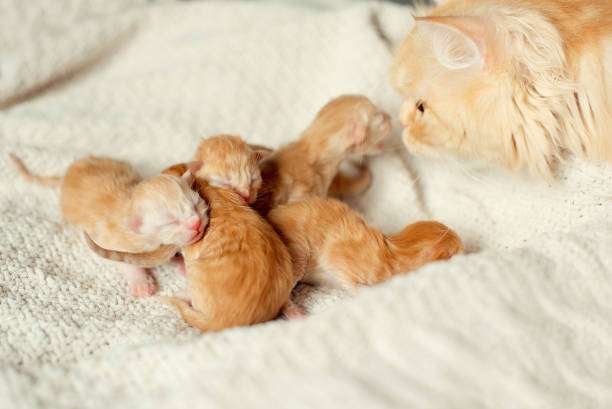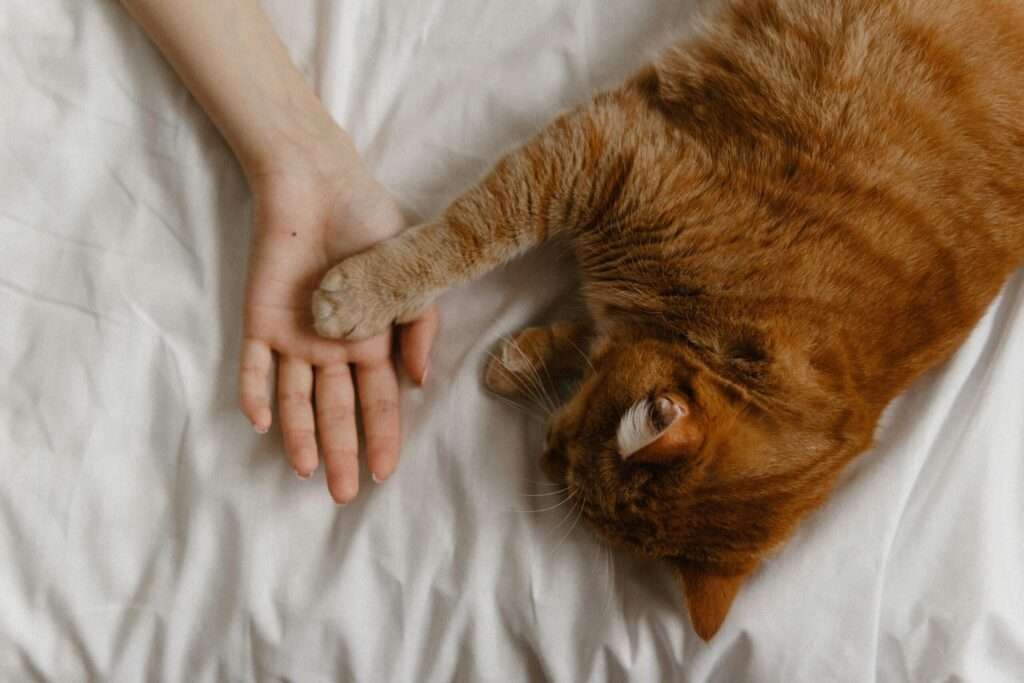Table of Contents
ToggleIntroduction
Hello, I’m Ava Grace, here to provide important information that could help save your cat’s life. Today, we’re discussing fast and bad breathing in cats, a symptom that should never be overlooked. fast breathing can be caused by a range of issues, from normal post-exercise panting to serious conditions like heart failure or feline asthma. This guide will cover the different types of heavy breathing, how to recognize them, possible causes, symptoms, treatments, and preventive measures to ensure your cat stays healthy.
Understanding Normal Breathing in Cats
To understand what constitutes abnormal breathing, it’s essential to first recognize what is considered normal. Cats naturally have a faster respiratory rate than humans. While humans typically breathe between 12 to 16 times per minute, a resting cat will breathe between 15 to 30 times per minute. Normal breathing in a cat should involve only a slight rise and fall of the chest, and the breathing should be quiet—almost whisper-like. To measure your cat’s respiratory rate, count the number of breaths per minute when it is sleeping or resting quietly. One breath consists of an inhalation and an exhalation. Multiply the number of breaths you count in 30 seconds by two to get the breaths per minute. A rate higher than 30 breaths per minute in a healthy, resting cat is not usually cause for concern but should be monitored. If the rate exceeds 40 breaths per minute, it’s essential to consult a veterinarian.
Types of fast Breathing
Heavy breathing in cats can be categorized into several types, each with different implications for health.
Dyspnea is a medical term used to describe difficulty breathing or respiratory distress. This condition is serious and requires immediate veterinary attention. Dyspnea often manifests as open-mouthed breathing or severe difficulty in breathing, with the cat adopting a specific posture—sitting upright with its head and neck extended, often with eyes closed. This posture indicates the cat is trying to make more room in its airway to ease its breathing.
Tachypnea refers to rapid breathing, usually with the mouth closed. While tachypnea is normal after vigorous exercise, it can indicate a problem if it occurs at rest. Tachypnea is characterized by a higher-than-normal respiratory rate, and if observed in a resting cat, it should prompt a veterinary visit to rule out underlying issues.
Panting involves rapid breathing with the mouth open, similar to how dogs pant. Panting in cats is generally not normal and can be a sign of stress, pain, or high body temperature. Certain medications, such as opioids, can also induce panting in cats.
Causes of Heavy Breathing in Cats
Upper Respiratory Infections
Upper respiratory infections are a common cause of heavy breathing in cats. These infections cause swelling and discharge in the nasal passages, leading to difficulty breathing. Cats with upper respiratory infections may exhibit signs such as sneezing, nasal discharge, and a fever. While these infections often start as viral, they can lead to secondary bacterial infections, necessitating antibiotics for treatment. Supporting care such as hydration and proper nutrition is also essential in aiding recovery.
Feline Asthma
Feline asthma is another prevalent cause of heavy breathing. It involves inflammation and constriction of the airways, leading to wheezing and difficulty breathing. Asthma in cats is often triggered by environmental allergens such as pollen, dust, or smoke. The condition can cause episodes of coughing, wheezing, and labored breathing. Management typically involves corticosteroids to reduce inflammation and bronchodilators to open the airways. Environmental modifications to minimize allergens are also crucial.
Heart Disease
Heart disease, including heart failure, can lead to fluid buildup in the lungs, causing difficulty in breathing. This fluid accumulation makes it hard for the lungs to expand fully, leading to symptoms such as rapid breathing and coughing. Cats with heart disease may also show signs of lethargy and exercise intolerance. Treatment usually involves medications to support heart function and manage fluid levels, such as diuretics and ACE inhibitors.
Pleural Effusion
Pleural effusion is a condition characterized by fluid accumulation around the lungs, which impairs their ability to expand and contract properly. This fluid buildup can result from various causes, including heart disease, tumors, or infections. Cats with pleural effusion may exhibit labored breathing, reduced appetite, and lethargy. Treatment often involves draining the excess fluid and addressing the underlying cause of the effusion.
Less Common Causes
Foreign Bodies
Foreign bodies, such as a piece of grass or a small object, lodged in the airway can obstruct normal breathing. This condition may cause sudden and severe respiratory distress, and immediate veterinary intervention is necessary to remove the obstruction.
Chest Trauma
Trauma to the chest, such as being hit by a car or bitten by a dog, can cause serious conditions like tension pneumothorax. This condition involves air trapped in the chest cavity, creating pressure that collapses the lung. Treatment typically requires emergency care to relieve the pressure and repair any damage.
Pneumonia
Pneumonia, an infection of the lungs, can cause heavy breathing and coughing. It may result from bacterial, viral, or fungal infections and often requires antibiotics or antifungal medications for treatment. Supportive care, including hydration and proper nutrition, is also important for recovery.
Collapsed Lungs
A collapsed lung, or pneumothorax, occurs when air leaks into the space between the lung and the chest wall. This can result from trauma or underlying lung disease. Treatment often involves placing a chest tube to remove the air and allowing the lung to re-expand.
Lung Tumors
Lung tumors can obstruct airways or cause fluid buildup, leading to heavy breathing. Depending on the type and location of the tumor, treatment may involve surgery, chemotherapy, or other targeted therapies.
Allergic Reactions
Allergic reactions can cause acute respiratory distress. Exposure to allergens can lead to symptoms like wheezing and panting. Identifying and avoiding allergens, along with administering antihistamines or corticosteroids, can help manage allergic reactions.
Heartworm Disease
Although less common in cats than in dogs, heartworm disease can cause significant respiratory issues. Heartworms can occupy space in the cat’s small heart, leading to coughing, difficulty breathing, and lethargy. Treatment involves specific medications to target and eliminate the heartworms.
Brachycephalic Breeds
Brachycephalic breeds, such as Persians and Himalayans, have structural abnormalities in their airways that can make breathing more difficult. These breeds often have narrower nostrils and elongated soft palates, leading to chronic breathing issues. Surgical interventions can sometimes help improve airflow and breathing.
Symptoms of fast Breathing
Recognizing the symptoms of fast breathing is crucial for timely intervention. Key indicators include rapid breathing, with the rate exceeding 30 to 40 breaths per minute. Cats struggling to breathe may adopt an unusual posture, often sitting or lying with their head and neck extended and eyes closed, focusing all their energy on breathing. They may also show signs of distress, such as purring due to pain or stress rather than contentment.
Other signs include exaggerated chest or belly movements with each breath, coughing, and pale or blue gums. Noisy breathing, such as snoring or wheezing, can indicate obstructions in the upper or lower airways. Foaming at the mouth can occur if fluid accumulates in the lungs.
Diagnosis and Treatment
If your cat exhibits signs of heavy breathing, a thorough veterinary examination is essential. The veterinarian will perform a physical exam, take a detailed history, and may recommend diagnostic tests such as blood work, urinalysis, and imaging studies (e.g., X-rays) to determine the underlying cause.
Treatment varies depending on the cause of the heavy breathing. For upper respiratory infections, antibiotics and supportive care are often necessary. Feline asthma is managed with medications like corticosteroids and bronchodilators, alongside environmental modifications. Heart disease requires medications to support heart function and manage fluid levels, while pleural effusion may need fluid drainage and treatment of the underlying condition.
In severe cases, where a cat struggles to get enough oxygen, oxygen therapy in an oxygen-rich environment may be required. For foreign bodies, surgery may be necessary to remove the obstruction, while chest trauma might need emergency care to relieve pressure. Pneumonia and lung tumors often require specific treatments such as antibiotics, antifungal medications, or surgery.
For conditions like upper respiratory infections, steam therapy can help loosen mucus in the nasal passages. Creating a steam-filled room can make it easier for your cat to breathe. However, all at-home remedies should be used alongside veterinary care to address the root cause of the breathing issues.
Prevention and Care
Preventing heavy breathing involves proactive health management. Regular veterinary check-ups can help catch potential issues early, especially for cats with known risk factors like heart disease or asthma. Keeping your cat’s environment free of allergens and maintaining a healthy weight can also reduce the risk of respiratory problems.
For cats with chronic conditions, follow your vet’s advice on medication and management strategies to control symptoms. Ensure your cat has a comfortable, stress-free environment and monitor for any signs of illness or behavioral changes.
Conclusion
Heavy breathing in cats can indicate various conditions, from mild to severe. Understanding normal breathing patterns, recognizing symptoms of heavy breathing, and knowing when to seek veterinary help are crucial for your cat’s health. Early intervention and appropriate treatment can significantly improve your cat’s quality of life.
Thank you for investing your time in learning about this important topic. Your vigilance and care can make a world of difference in your cat’s well-being. For any concerns or if you observe signs of heavy breathing in your cat, consult your veterinarian promptly.
FAQ Section for Fast and Bad Breathing in Cats
What is considered normal breathing for a cat?
A resting cat should breathe between 15 to 30 times per minute.
What is dyspnea in cats?
Dyspnea is difficulty breathing or respiratory distress, requiring immediate veterinary attention.
What does tachypnea indicate in cats?
Tachypnea is rapid breathing and can be normal after exercise but should be checked if it occurs at rest.
Why might my cat be panting?
Panting in cats can indicate stress, pain, or high body temperature and is generally not normal.
What are common causes of heavy breathing in cats?
Common causes include upper respiratory infections, feline asthma, heart disease, and pleural effusion.
How can I recognize heavy breathing in my cat?
Symptoms include rapid breathing, unusual posture, exaggerated chest movements, and noisy breathing.
What should I do if my cat shows signs of heavy breathing?
Consult a veterinarian for a thorough examination and appropriate treatment.
How is feline asthma managed?
Feline asthma is managed with corticosteroids, bronchodilators, and environmental modifications.
What is pleural effusion and how is it treated?
Pleural effusion is fluid buildup around the lungs, treated by draining the fluid and addressing the underlying cause.
How can I prevent heavy breathing issues in my cat?
Regular veterinary check-ups, maintaining a healthy environment, and following management strategies for chronic conditions can help prevent heavy breathing.



